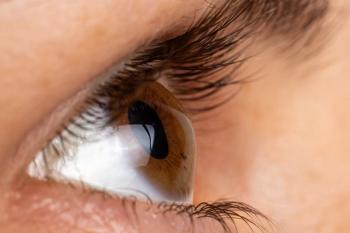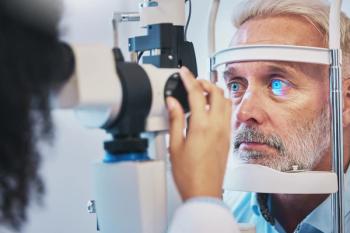
Implementing myopia prevention and control
Myopia control and prevention has become a popular topic due to more data on myopia becoming available.
New York-Myopia control and prevention has become a popular topic due to more data on myopia becoming available.
At Vision Expo East, Louise Sclafani, OD, FAAO, and Jeffrey Sonsino, OD, FAAO, shared information about myopia and myopia control studies and offered suggestions for ODs interested in adding such a service to their practices.
Related:
Prevalence of myopia
U.S. myopia prevalence is considered to be 42 to 46 percent with a 68 percent increase in 20 years.1
“That number is likely even higher now because those numbers come from a 2009 study,” says Dr. Sclafani.
In addition, those with higher myopia (>-8.00 D) is projected to have an eight times increase.
According to the Brien Holden Vision Institute (BHVI), worldwide myopia prevalence varies:
• U.K.: 32 percent
• Canada: 72 percent
• Europe: 42 percent
• China: 95 percent
• Taiwan: 84 percent
• Singapore: 81 percent
• South Korea: 96 percent
BHVI projects the number of myopes to continue to increase to 2.5 billion by 2020 and 5 billion by 2050. By 2050, the number of myopes greater than 5.00 D will reach 900 million-increased from 200 million in 2010.
Related:
Myopia is a disease
High myopia increases the risk of glaucoma by 14 times,2 retinal pathology by 8 times,3 and cataract by three times.4
Overall, myopes are at increased risk for:
• Glaucoma
• Retinal detachment
• Earlier cataract development
• Myopic macular degeneration
Myopia can be considered the leading cause of visual impairment for many nations, says Dr. Sclafani.
The length of a myopic eye leads to structural damage.
Myopia is due to corneal curvature, lens power too low, and axial length too long, according to Dr. Sclafani.
“We can control lens power and corneal curvature, but not axial length,” she says. “The whole premise of myopia control is to keep the stimulus where it should be.”
The implications of myopia include:
• Lifetime economic burden
• Reduced productivity, independence
• Reduced quality of life
• Ocular health risks
“If you don’t believe in myopia control, you haven’t read the literature,” says Dr. Sonsino.
Theories of myopia onset are genetic, environmental, and physical.
Related:
Myopia control
Attempts at myopia control include:
• Bifocal spectacles
• Spectacle undercorrection at distance
• Gas permeable contact lenses
• Atropine
Bifocal spectacles or undercorrection decreases strain on the globe to reduce axial length or to reduce accommodative error. This is also known as lag, which puts the focus behind the retina.
Progressive addition lenses (PALs) show positive results at two years but lose effectiveness at five years. The seven percent reduction in myopia progression is not clinically significant.
Gas permeable contact lenses slow progression by about 0.75 D per year. Because they control growth from the front by flattening the cornea rather than decreasing axial length, so the effect is transient.
Orthokeratology (ortho-k) or corneal reshaping slows growth by about 50 percent, not just from central corneal flattening. Peripheral defocus of the lens inhibits growth.
Atropine is a non-selective muscarinic antagonist. It has a local effect with unknown mechanism of action. It offers a 77 to 96 percent reduction. Side effects include UV exposure, reduced accommodation, and allergy.
Related:
Pearls for implementing myopia control
Dr. Sclafani and Dr. Sonsino shared ideas for ODs interested in controlling myopia in their patient bases.
“You won’t be doing myopia control without fitting kids, so first get comfortable with fitting kids,” says Dr. Sclafani.
She suggests adapting equipment for smaller heads and bodies and making the exams fun.
“When you instill fluorescein, kids will cry and have runny noses,” she says. “Be prepared.”
Burton lamps can also help with pediatric fits.
Keratometry is where the fitting begins, especially with gas permeable contact lenses. Measure, guess, and use actual lenses to determine K readings, according to Dr. Sclafani.
“I use a handheld auto keratometer,” says Dr. Sonsino. “It’s great to use with kids, and it can also be sued in the OR for exams under anesthesia.”
If you’re fitting ortho-k lenses, use topography, according to Dr. Sonsino.
Related:
“Ortho-k is not safe to perform without a topographer,” he says.
Familiarize yourself with relevant studies about atropine, myopia control, ortho-k, and other options.
“Keep copies of the studies on hand to show parents,” says Dr. Sclafani. “Many myopic parents are highly educated and want this information.”
Dr. Sonsino and Dr. Sclafani agree:
• For first fits, select patients with two highly myopic parents
• Introduce the concept when you think intervening will be clinically beneficial
• Parents as well as child patient need to buy into the process
• Allow enough time in scheduling for training and retraining on lens application, wear, and care
• Ensure patients have backup spectacles
• Plan for a tighter follow-up schedule for myopia control patients
Be sure you are compensated for your time and clinical expertise.
“No way you should be performing myopia control within the constraints of vision insurance,” says Dr. Sonsino.
References
1. Vitale S, Sperduto RD, Ferris FL 3rd. Increased prevalence of myopia in the United States between 1971-1972 and 1999-2004. Arch Ophthalmol. 2009 Dec;127(12):1632-9.
2. Qiu M, Wang SY, Singh K, Lin SC. Association between myopia and glaucoma in the United States population. Invest Ophthalmol Vis Sci. 2013 Jan 28;54(1):830-5.
3. The Eye Disease Case-Control Study Group. Risk factors for idiopathic rhegmatogenous retinal detachment. Am J Epidemiol. 1993 Apr 1;137(7):749-57.
4. Younan C, Mitchell P, Cumming RG, Rochtchina E, Wang JJ. Myopia and incident cataract and cataract surgery: the blue mountains eye study. Invest Ophthalmol Vis Sci. 2002 Dec;43(12):3625-32.
Newsletter
Want more insights like this? Subscribe to Optometry Times and get clinical pearls and practice tips delivered straight to your inbox.













































